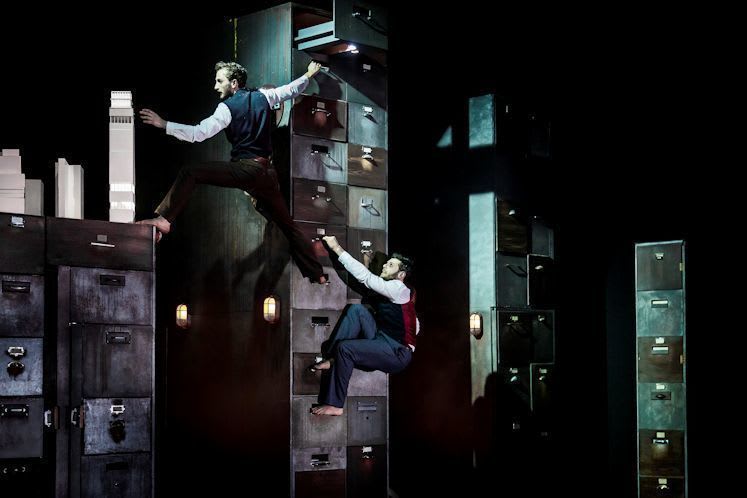Taking part in—and also, I have to admit, eavesdropping on—conversations about Institute after the show revealed that there were probably as many interpretations of the piece as there were audience members.
That's what I thought as I travelled home afterwards. More mature reflection makes me realise that people were taking from this extremely complex and dense piece those aspects which hit home with them, which most related to their lives and experience.
Some saw it as being about burn-out in high-pressure work environments; some talked of those same pressures' effects on personal lives and relationships; some saw the need for mutual support, others recognised an uncaring environment.
Some, indeed, didn't have any interpretation. I heard one lady say, "I didn't understand it, but I loved it".
At the end some sat in their seats, stunned, while others surged to their feet, cheering and whooping.
The stage is surrounded by filing cabinets, huge filing cabinets which tower over the performers—at one point two of them even climb them. Some of these cabinets have drawers which fulfil their normal function whereas others pull out to reveal whole scenes: a restaurant table, an office, a hospital. All the furniture is small-scale: chairs, for example, which are, in size, like those in primary schools.
There are 'phones whose ringing interrupts the action, carrying messages from the bosses to the workers. There are spotlights high on the wall of cabinets which come on to switch the workers' attention back to their work, as, for example, when Martin is trying to have an intimate Italian restaurant meal with his girlfriend Margaret, who is represented simply by a pair of white disembodied hands.
Thus is the business world shown to dominate the human.
There are few words, with one character speaking entirely in French and another in German, but there is an eclectic soundscape which includes not only some of the great standards sung by Sarah Vaughan, Ella Fitzgerald and Frank Sinatra but also the breathing and sub-vocalisations of the characters on stage.
There's also a wide range of movement styles, from dance to clowning to Haka, all part of the complex density of the piece. Our response is not intellectual (well, perhaps a little) but mainly visceral and emotional, which is why each individual takes from it what relates to him/her.
What is certain is that we, the audience, are riveted, even transfixed, with our experience of the piece churning around in our heads and hearts long after the performers leave the stage and we leave the theatre.
